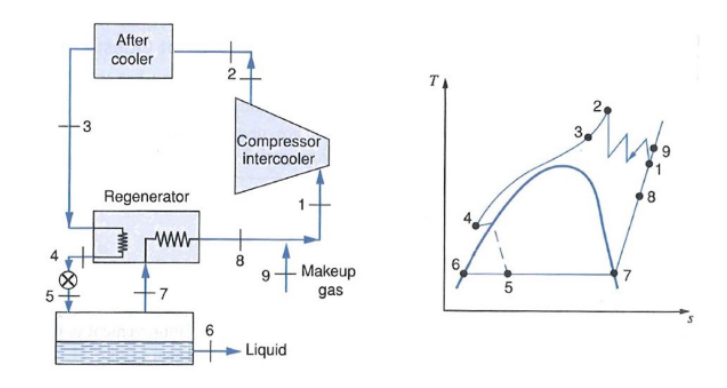Refrigeration Cycle
Refrigeration Cycle vs Power Cycle
Power cycle:
- Objective: create work/power
- How: Take heat from hot source
- By-product: Give heat to cold source
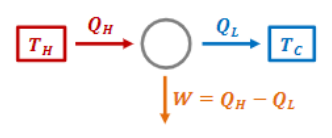
Refrigeration cycle:
- Objective: Take heat from cold source
- How: Take work/power
- By-product: Generate heat
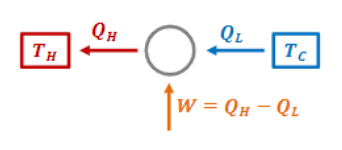
Recall 2nd law: Clausius Statement:
It is impossible to construct a device that operates in a cycle and produces no other effects than the transfer of heat from a cooler body to a hotter body.
Layman terms: If you want heat to go from cold to hot, you need to do work.
History
William Cullen:
- 1710-1790
- Scottish
- 1755: general concept
Oliver Evans:
- 1755-1819
- American
- 1805: closed vapor-compression refrigeration cycle
Jacob Perkins:
- 1766-1849
- American
- 1834: patent for vapor-compression refrigeration cycle
Examples:
Components:
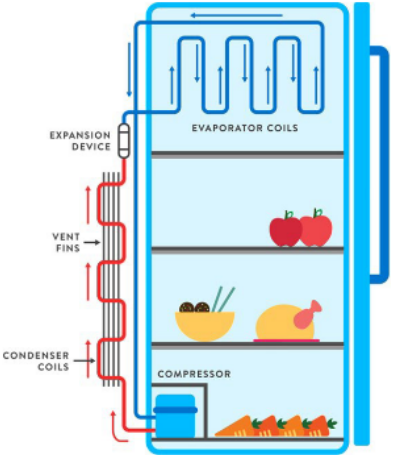
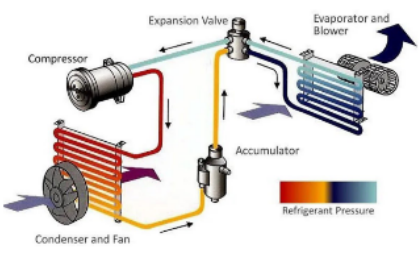
Cycles:
Stages:
Compression:
- Compression of gases
- Isentropic
Heat exhaust/Condensation:
- Loose Heat
- Constant Pressure
Expansion:
- Pressure reduction
- Adiabatic (not always isentropic)
- Air-Standard Cycle:
- Vapor Compression Cycle:
Heat intake/Evaporation:
- Gains Heat
- Constant Pressure
Air-Standard Refrigeration Cycle
Extensions:
2-Stages:
Concept:
- Large
difference - One fluid
- One cycle
- Two stages

Cascade System:
Concept:
- Very large
difference - two fluids
- Two cycles
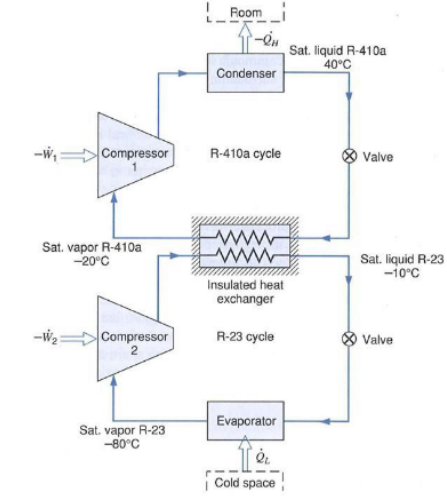
Applications:
Liquefaction of gases:
- Linde-Hampson system
